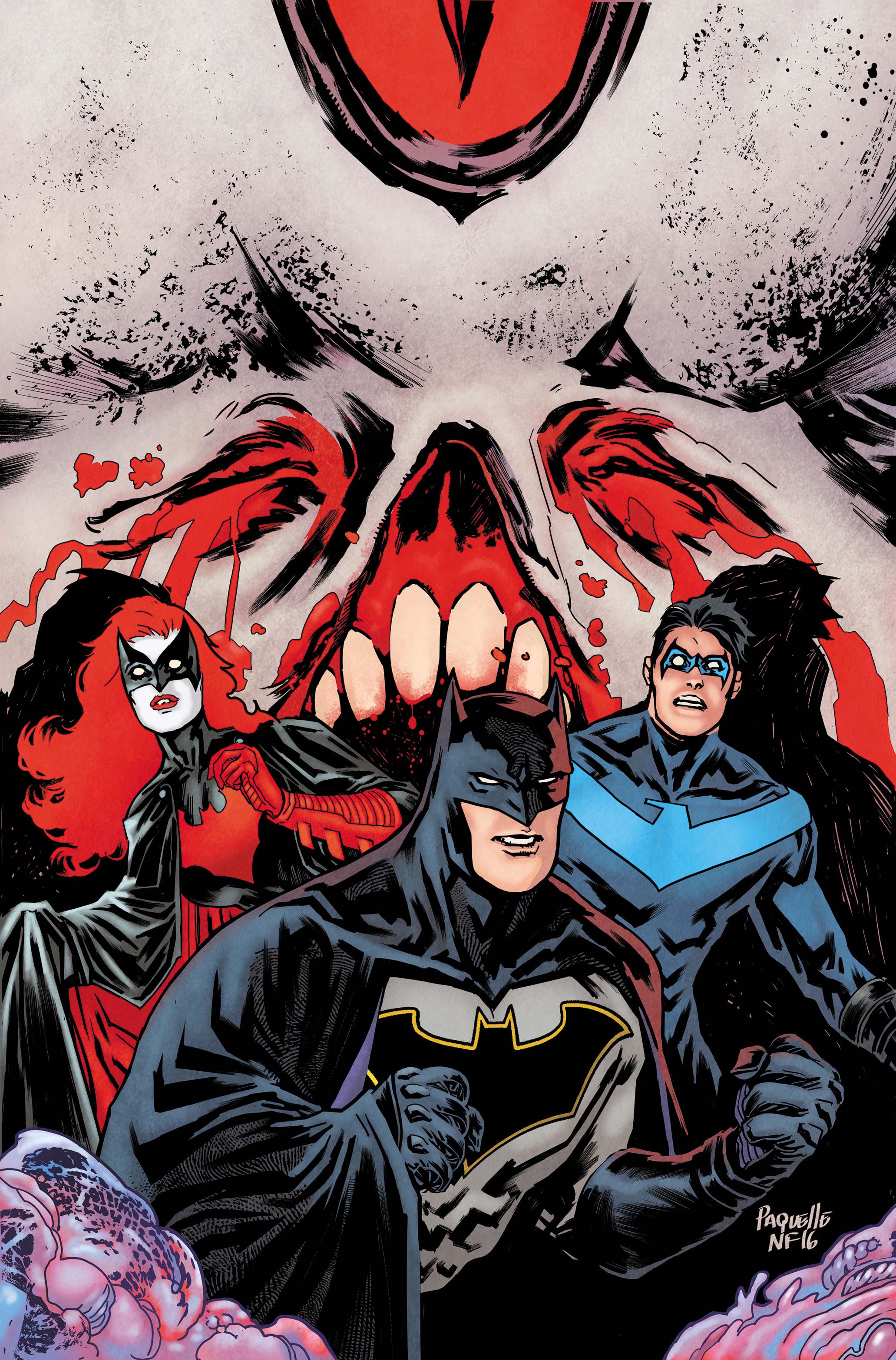The Spandex Retrospective: X-Men: First Class (2011)
I finally got out of the 'Star Trek: Into Darkness' midnight showing, near three in the morning and I was pissed. There had been applause at the end of the film, something I hadn't heard at a movie in years and I couldn't fathom what possibly my fellow geeks were celebrating. As I argued with myself during the drive home about 'Darkness's brutal blatant stupidity, I felt a weird nauseous familiarity creep over me. The next day I pinpointed what the feeling was. It reminded me of seeing 'X-Men: First Class'.
Now, upon second viewing for this review some of my venom about 'First Class' has diluted, a venom presumably attributable to the exhausting and uncanny experience seeing it the night of 'Heroes Convention 2011', but my bewilderment stands. The film was lauded almost universally by geeks as an exceptional superhero movie, some even going as far as to ridiculously claim it was the Marvel equivalent of 'The Dark Knight'. Adjectives were thrown around like 'smart' and 'well-written' with an apparent obliviousness to their meaning, leading me to think my fellows had been finally done in by the one-two punch of Ratner and Hood.
This isn't to say that 'X-Men: First Class' didn't get a surprising amount right. I've often been dismayed at the lack of creativity and daring in modern blockbusters, especially in superhero films, but there was quite a bit of risk on display in 'First Class'. The film was loaded with a collection of B to D list mutants with practically no name recognition for the man on the street and little attempt was made to rely on the aesthetic established by the existing trilogy, perhaps a conscious attempt to throw the increasingly rank reputation of the franchise's previous two installments. As cold reboots of existing series like 'The Amazing Spider-Man' feel drowsily uninspired, to see a prequel that felt like it was striking out on its own was admittedly refreshing.
Also, unlike the hobbling nonsense of 'X-Men Origins: Wolverine', the film never confused what era it was set in. It was a genuine period superhero movie loaded with black turtlenecks, swinging 60's music, and dot-matrix printers. The dialogue was left anachronistic however, meaning alas we only get to hear Xavier use the word 'groovy' briefly, but it prevents the film from being too distracting to modern audiences. The attention to detail was admirable and impressive, only hurting the film in relation to Sebastian Shaw's proto-Brotherhood that all dressed like they had just walked off the set of 'Austin Powers 4'.
The film also had a real structure that while not original by any means still showed that at one point in the creative process real thought was given to the stories of the characters they were developing. James McAvoy's Charles Xavier was young, stylish, and even arrogant. He used his powers casually and initially seemed most interested in using his big brain to mack on college birds. Unlike Abrams' 'Star Trek' reboots where characters are aggressive caricatures of their older selves, 'First Class' wisely recognized that people when they're young are often entirely unrecognizable as the person they become with age. Fassbender's Erik Lensherr strays as well from the Shakespearian tone of McKellen's Magneto and is reshaped into a James Bond like hitman, constantly teetering on the edge of rage and agony. It's made a point in the plot that his experience in the Nazi concentration camps were unique thanks to his mutant abilities, experimented on to such an extent to cause repression of deep memories, a parallel, perhaps unintentional, with pre-'Origins' Wolverine.
Special note should also be given to Jennifer Lawrence and her arc as Mystique, which is one of the more interesting ideas the film has to offer. Here, Mystique is Xavier's foster sister, rescued from a life of homelessness as a child. The nature of her character is ironic, that as person who is able to alter her form at will she feels self-conscious about her natural reptilian looks; painfully jealous of her oblivious adopted sibling who feels none of those social pressures. Some of the film's best moments come from this choice, taking a character that was largely a special effect in the original trilogy and hinging a genuine plot on her. Young Xavier is revealed to have been insensitive to the dilemma of visually different mutants, giving the allure of Magneto's open mutant-centric society an honest appeal to the young Mystique, and even giving a plausible rationale to her later choice to prance around nude and blue. Lawrence has genuine chemistry with both McAvoy and Fassbender but alas is stuck with Nicholas Hoult's Hank McCoy for most of the film, who seems to emote largely by cycling through various adorable awkward looks.
While I heap praise on the lead three actors, they deserve even more for wrangling the worst element of the film; it’s awful script. Dialogue throughout seems to consist almost entirely of exposition or blunt literal explanations of the plot. It's actually remarkable to watch McAvoy and Fassbender attempt to make dialogue that reads like bulletpoints sound conversational. Even the rare scenes that are intended to be intimate and further the relationships between characters just ping-pong back and forth, like an improvised example a college professor might invent to explain dialogue in its basest form. The first draft feel of the script dulls even the best intentions of the story and makes anyone who isn't McAvoy, Fassbender, and Lawrence look inept and goofy.
Rose Byrne, a fine actress to be sure, is reduced to looking pretty and doing a surprised face, and the awkward bookmark of her kiss with Xavier is utterly lacking in foreshadowing. The other Xavier students are immediately forgettable. Banshee is played by a lost Weasley brother and Havok doesn't feel required to change his facial expression or vocal pitch. Oliver Platt is brought onboard, apparently to remind me that the 90's thought he was an actor. There's a doofy quality to the portrayals of American and Russian military that robs the escalation to the Cuban Missle Crisis of any and all tensions, the Russian General featuring all the stereotyped subtly of Nikolai Jakov from television's 'Archer'. Sebastian Shaw's collection of grab-bag mutants have as much personality as they are given dialogue and look silly in every scene they inhabit, with Zoe Kratitz's traitorous Angel being awful to the point of distraction. Luckily, for her that is, she had January Jones to provide contrast.
January Jones stars on one of television's most highly acclaimed dramas and has hosted 'Saturday Night Live' yet somehow came off like she'd never been in front of a camera before. Playing fan favorite Emma Frost, she emitted an utter vacancy that was horrifying to behold, with Barbie-bland delivery like she was playing a sex robot set to confused boredom. She was clearly brought on to be window dressing, taking the complex character Frost had recently been developed into and converted into a plot device with display cleavage. Even in this meager unappealing duty she failed miserably, coming off as sexy as a hat-rack. She was easily as rage inducing as 'X-Men Origins: Wolverines's' will.i.am but at the very least he had the excuse of not being an actor beforehand.
What's truly awful is how much screen time found its way back to her, as the film kept seeing it necessary to cut away from the story to Shaw's ridiculous looking submarine set so he could allude to his Master Plan. And boy is it a doozy. Essentially, Shaw intended to ignite World War III so the Americans and Russians would willingly nuke the planet. It was alluded to that the modern mutants may have been accelerated into existence by the dawn of nuclear experimentation. Shaw states that the nuclear fire that kills mankind would only make mutants 'stronger', creating an apocalyptic wasteland ruled by the Children of the Atom. God only knows what he means by this, because save for Wolverine and himself most mutants get killed by all kinds of things. Bullets. Fire. Suffocation. Why nuclear explosions wouldn't be on that list is left unsaid.
It was also a joke because Shaw wasn't ever depicted as a rugged idealist. He sipped wine on his luxurious-ish submarine, and when he wasn't doing that he was at his Vegas Hellfire Club surrounded by fine spirits and easy poonany. We never see why this well-heeled ponce would want to end a world of all of that, as nuclear hellfire wipes out all fine food, wine, culture, and pretty much anything else worth owning and enjoying. With Fassbender's Magneto we can see that fire, that glowing rage that would end the world to save mutantdom. With Shaw neither his plan nor motivations are of the slightest intelligence and undermine any sense of threat from him in ways Kevin Bacon in a silver Magneto helmet couldn't hope to.
Despite stretching out its own direction in many ways, the film still contains plenty of ugly 'Origins'esque attempts to explain where parts of the franchise came from that we never asked it to. In one scene the young teen mutant students are goofing off and take it upon themselves to invent the codenames Professor X and Magneto for their teachers, meaning the world's most powerful mutant terrorist has been using a dorky nickname some kids called him once in the 60s. Of course, by the end of the film Xavier has to be in a wheelchair by the rules of prequel, but weirdly it's the same futuristic silver wheelchair he has in 2000, as well as the same kind of blue suit, making me wonder if he never learned how to change clothes as a paralyzed person. However, just like 'Origins' the film has a general disregard for the series' existing canon, making it all feel like awkward fanservice rather than relevant.
An early scene bothered me the first time I saw it; Erik walked into an Argentinian bar owned by ex-Nazis, hunting for Sebastian. It wasn't that Sebastian apparently thought it was a good idea to take a photo with his old Nazi buddies, hung proudly in the bar. It wasn't that the guy that Erik pins to a table with a knife through the hand never struggles or attempts to remove the knife . It wasn't even that Erik kills all of the former Nazis before interrogating any of them for Shaw's location. It's the score. Initially I thought the scene was paced badly, feeling like there was a weird rushed quality to the dialogue, but the second time I viewed it I realized it's the omnipresent score that blankets the whole movie in faux-Zimmer noise. In most superhero films, a bad score is generally just forgettable, but here composer Henry Jackman's inelegant soundtrack hammered at the film as much as the clunky dialogue, uneasy with the idea of the audience being able to read the beats of the film without it being announced. There's a famous bootleg version of 'Star Wars Episode I: The Phantom Menace' that edited out all references and appearances of Jar-Jar Binks, resulting in a vastly improved film. I imagine a similar result could be achieved with 'First Class' by removing 50% of the film's overbearing score.
If there was a scene that summarized my feelings about the film it came during the climax, when Erik finally faced his dorky looking nemesis in the sub's reactor room. While Shaw is physically frozen by Xavier's powers, Erik levitates a Nazi coin and in in a callback to his torture at Shaw's hands forces the coin magnetically through his tormentor's brain while Xavier is agonizingly forced to psychically witness and experience it. It's an effective and well written scene that is structured for emotional payoff. I remember watching it however, recognizing this, and feeling nothing. A part of me really wanted to experience the payoff intended, but after having to wade through all of the sloppy writing and filmmaking to get to that point, the effect was dulled down to loud numbing slosh. Nothing is worse as an audience member then really wanting to like an infuriating film.
The Spandex Retrospective: Hellboy (2004)
Oh, how do you solve a problem like 'Hellboy'? Mike Mignola's iconic red superhero, a visual hybrid of Satan and a shaved Gorilla who spends his time punching Nazi robots and figures of Russian folklore in equal measure, was up for a rare Dark Horse movie adaptation. How the traditionally skittish studio heads came to this decision was mysterious, as Hellboy was neither a recognizable brand outside of the comic shop or something the tykes of middle America would buy an action figures of. The franchise was weird and so they gave it to a weird guy; future jefe of geekdom Guillermo Del Toro. However even Del Toro, sitting in his Los Angeles man cave surrounded by jars of preserved fetuses and parchment drawings of dead gods, must have known that 'Hellboy' was a massive gamble with audiences. How does one bring the Right Hand of Doom to the Summer movie crowds? The result was a film that both tamped weirdness commercially back while letting other parts relax into the strange. Hazard a guess which parts were more fun?

While Del Toro was a kindred spirit to Mignola, one of the first things you notice about 'Hellboy' is the little choices made to make the world a little more broadly recognizable. The BRPD is a more modern institution in the film than the comics, another post-'Men in Black' organization with a cheeky blasé attitude about the unhuman world they police and a glossy brushed steel underground headquarters. Less vintage cargo planes and more secret garbage truck bases. Instead of feeling like a cop-out however this lent to the contrast between the mystic world and the human one. During an investigation at a museum we see a lobby filled with men in identical black suits and the amphibious Abe Sapian in a glowing high-tech breathing device. To research the threat however, Abe relies on a fragile looking wooden box containing carefully organized dusty vials of fluid and books with thin creased leather covers. It was a subtle contrast not acknowledged verbally, but communicated that when dealing with the world of magic old is better.
The film was also extremely pretty to look at. Every major motion picture has an extraordinary artistic team behind it but there's a marked difference when the filmmaker directing the team clearly knows what they want. During the opening scene Rasputin puts on a glove with rotating metal rings and glowing bulbs and one feels like demanding the film stop what it's doing and just let us get in close to look at it. From he glass cases on the walk to Hellboy's vault/lair to the Mignolaesque simplicity of the climactic keyhole monolith, there's a sense of care and detail that seems to be Del Toro's speciality, and it sometimes feels like a shame when so much of it is whisked past. The film's color correction is a little heavy-handed at times, a notable symptom of its time, but contrasted by meaningful art design.
It seems Ron Perlman was born to play Hellboy. A character actor with a long history of supporting roles, Perlman very rarely got to play heroes, more regularly cast as vicious dicks ('Blade II', 'Alien: Resurrection') or henchmen monsters ('Star Trek: Nemesis', 'The Island of Doctor Moreau'). While still hidden under pounds of latex appliances, this time Perlman got center stage and showed off his capabilities a leading man. His Hellboy has a rumpled cockyness and grumbling charisma reminiscent of Harrison Ford's best years, serving as the real draw for the film and capable of shrugging off some of the flimsiness of the story. There's also more than a little adolescence to the character, a seven-foot monster-punching demon with a case of arrested development, most often drawn out in the presence of his adopted father and girlfriend. While there's plenty of blasting guns and prolonged fisticuffs Perlman regularly gives the films its best material in the infirm, whether jealously stalking his girlfriend from the rooftops or busting a resurrected corpses chops. If there were one pressing need for a third 'Hellboy' film it would be Perlman giving us more of that character.
On the other end of the spectrum is Jonathan Meyers, an original character added to the film as 'de-weirder'. Meyers was an outside agent, brought into the world of the BRPD to serve as a sort of handler for Hellboy since Hellboy's father Professor Bruttenholm is secretly dying of cancer. The reasons for this aren't especially clear since Broom seems to have a spontaneous trust in a complete outsider to handle a job of great emotional complexity and that Hellboy doesn't seem readily controllable by anyone. The electronic tracker Hellboy wears had a switch to turn it off and all Meyers could do to keep him from joyriding was to fruitlessly bleat after him.
In actuality, Meyers was an audience proxy, an individual who can receive exposition from other characters as he is as new to the world as the viewer. Unfortunately the film seems to confuse itself about who the protagonist was as Meyers was given a half-finished character arc and even introduced mild conflict by clumsily forming a romantic triangle with Hellboy's girlfriend Liz Sherman. In keeping with the 'Men in Black' parallels a lot of Meyers' plot seemed to be a milquetoast quipless version of Will Smith's Agent J, but I felt vibes of a different character from another science-fiction franchise. In one conversation with the elderly Professor, Meyers claimed he wasn't the right person for the job and it sounded down to the inflection like Mark Hamill telling Alec Guinness that he had to get back to the moisture farm. Actor Rupert Evans did his unpopular job admirably, but as the finale swept around converting him into a questionably useful observer his lack of resolution made his inclusion feel like a tack added by the studio, and he was wisely excised from the superior sequel.
Meyers wasn't the only odd attempt to try to make this occult fantasy more palatable to the crowds. Cult favorite Doug Jones, who played Abe Sapian, had his voice dubbed over by 'Frasier' star David Hyde Pierce, who in the early part of the last decade had his voice in practically everything. It was a predictable but disappointing move on the part of the studio, made bizarre by Pierce himself, who apparently out of respect for Jones had his credit removed from the final film, eliminating the point of the dub. Jones would later go on to serve as the voice of Abe in the sequel as well as the animated films and the video game, but I've always thought a cut of 'Hellboy' with his original vocal performance would be something that fans would appreciate seeing on video.
The plot is a sticky point for 'Hellboy', not bad but forgettable and unsubstantial. It centers around the return of Rasputin, the famed Russian mystic and his plan to use Hellboy to open the door between our world and a prison for Lovecraftian gods. Events happen between the opening and the conclusion, but very few seem to relate to this. Rasputin releases an unkillable amphibian monster, triggers Liz's pryomancy to devastating effect, and kills Bruttenholm all with only the vaguest association with his actual motivations. While actor Karl Roden does what he can with the little he is given there's simply not a lot of villainy to be had, upstaged by the frog demons and Hitler's ninja.
Hellboy and Meyers both have semi-arcs in the film, but are often incomplete or underdeveloped. There's a running theme of Hellboy's childish rebellions against his father's will, but bizarrely Hellboy and Bruttenholm share very few scenes together while he is alive, developing no onscreen relationship. Unlike films like 'Daredevil' the plot doesn't feel lazy as much as weirdly unfinished feeling, as if for one reason or another scenes simply didn't get shot or written. It isn't especially distracting while watching the film, but noticeable when thinking back afterwards and having a hard time remember much other than specific beats or dialogue.
For being a Del Toro film the effects still suffered a bit thanks to the limits and mistakes that were frequent in the years around 2004. The monster Samael, the primary creature effect of the film, was accomplished with a combination of practical effects and CGI, with quite a bit of Ron Perlman tussling with a rubber suit. The suit is well designed, that wonderful middle ground of goofy and cool that only animatronics and rubber can find, but it was heavy and moved slowly. When the effect was CGI, Samael achieved a raptor like quickness and flexibility, apparently intended to be authentically intimidating. The disparity between the practical and the digital effects became distracting, as one was challenged to connect the two effects together as one creature, something Del Toro wrestled with in his previous comic movie 'Blade II'.
'Hellboy' is a straight-forward example of Del Toro when he makes blockbusters; short on developed story but high on detail and charisma. There was a bit more studio tinkering visible in the film then even his earlier Blade movie, but the performances and Del Toro's personal fetishes helped elevate the film to an enjoyable if slightly forgettable fantasy. After the climax, with the Elder Gods safely remaining in the Phantom Zone, Meyers awkwardly watched Hellboy and Liz make out while on fire, using voice-over narration to muse 'what makes a man'. While a serviceable and likable entry in the genre, it took a sequel for the studio to back off and trust the audience to be able to ask those questions themselves.
The Spandex Retrospective: X-Men Origins: Wolverine
Did you ever wonder how Wolverine got his jacket? I'm sure you did. When Rogue sat down at the bar a few stools down from the brooding mutant in 'X-Men' we all knew what she was really staring at was that cool leather jacket. 'X-Men Origins: Wolverine' knows you wonder about the jacket. It sets aside a scene to let you know where the jacket comes from. The movie is set in the 70's but Logan holds onto it for decades, never letting it get damaged. What good is a story if we don't get the background for a character's wardrobe selection?

Like seemingly every bad superhero movie the film starts off pretty well before turning to toilet. In the case of 'X-Men Origins: Wolverine' it's actually amazing how long it maintains decency, which only makes its gradual but aggressive decline more bizarre. The film begins in 1860's Canada and does a quick and clumsy pre-credits version of the Jemas/Quesada/Jenkins comic 'Origin', showing Wolverine's bloody departure from his home as a child. In this version Sabretooth is his half-brother who flees with him, forging a close bond as two outcasts alone in the world.
During the credits we are treated to their life as indestructible warriors as they fight in every war America participated in that a history illiterate filmgoer would remember (so no Korea, sorry folks). As one sees a cigar chomping Wolverine about to storm the beach at Normandy or Victor Creed raining hell from a helicopter over Vietnam one might get the fleeting feeling that this is actually the movie you'd have wanted to see. If done with a hard-R sensibility, it actually could have been pretty epic, but instead it served merely as set up for Wolverine and Sabretooth's relationship as brothers who experience their endless wars a bit differently. It's disappointment considering the tease, but nothing fatal yet.
During Vietnam, Sabretooth's viciousness gets him and Wolverine put up against an American firing squad, which obviously fails to kill them. William Stryker shows up and offers them a job on an elite mutant hit squad, asking if they would like to “really serve their country”, apparently having not been told that they are Canadians. The team, made up of famous mutants like Deadpool and Blob and less famous one like John Wraith and Bolt. This marks the first time you forget the film is supposed to be set in the 60's and 70's as the whole squad is dressed in generic superhero gear with a very millennial aesthetics. This kind of anachronistic lack of attention to detail prevails throughout the film as we see plenty of flat screen computers with fancy futuristic GUI displays. What, did you expect them to make Weapon X with DOS?
Frankly, the movie is still pretty good at this point, despite some minor blasphemy. Ryan Reynolds plays Wade Wilson, but what that means for the movie is he plays Van Wilder Ninja as he has neither mask or physical disfigurement. Despite this he actually does a good job as the Merc with the Mouth and it's a pity he pulls shit for the Deadpool stuff that comes later that he isn't responsible for. The frequently good Kevin Durand is also excellent in the film, playing both bulky hick Fred Dukes and his later Blobby iteration very well. Again, a film I'd rather have seen breezes by as setup for the later movie, as the hit squad gets one passable action sequence before Logan ditches them for the backwoods of Canada again.
Logan becomes a lumberjack, landing an implausibly supermodely Kindergarten teacher Kayla Silverfox in his implausibly nice cabin overlooking the mountains. She doesn't mind the frequent claw-popping nightmares that Logan has in the middle of the night that could easily kill her while she sleeps. Pepper Potts slept on the couch when Tony's nightmares made his suit a little creepy, Kayla just laughs about how they'll need new sheets. Even this isn't that bad of a movie, Hugh Jackman's easy charm suits this part of the film fine, and we get an effective scene showing Sabretooth knocking off members of Logan's old hit squad...
Sabretooth kills Kayla, Logan swears howling-to-the-sky revenge and at minute 32 the film suddenly and dramatically starts turning to shit.
After trying to kick his ass, Logan finds out he can't kick Sabretooth's ass. Why this is, since they both have the same kind of magic mutant regenerating ass is left a magic mutant mystery. Fortunately for Logan, William Stryker returns with an offer to give him the power to kill Sabretooth for good: adamantium plated bones. Logan agrees to undergo the Weapon X procedure so he can get his bloody vengeance.
First, let's quickly mention the Weapon X facility. It's at the top of a waterfall. This is so Logan can jump off the waterfall because people are really impressed when other people jump off of waterfalls. For a film that make us tolerate references and explanations of a million little things from the first 'X-Men' trilogy they sure like to change big things for no reason, as we spent a lot of time at the Weapon X facility in the earlier films and it was under a dam. Stryker also invites high ranking government officials as an audience to his experiment, one that is reenforced to have a somewhat shifty chance of actually working. Why Stryker would invite people who are already skeptical of his program to witness a graphic operation that even when it succeeds still turns tits up is beyond me.
The surgery also takes less than five minutes.
The Weapon X program is central to the tragedy of Wolverine as a character. It's constantly the ghost in his past, in the comics and the films, as the great crime committed against him; serving as a Guinea pig for government experiments on mutants. The horror of these memories and what was done to him served neatly as the emotional spine of the franchise's best installment 'X2: X-Men United', where we got impressions of a torturous process that left a man broken and feral. 'Origins' takes that story and makes Weapon X a procedure, that while unbearably painful, took less time than it would take to get a cavity filled, and then goes to just make it a questionably logical tool to get generic revenge. It's a crassly stupid move that takes one of the single most interesting and important dimension of the central character and makes it utterly meaningless.
Of course Stryker has ulterior motives. Logan escapes, jumps off the waterfall (whee!), and conveniently finds that one old couple that's always in these movies that makes every random naked government superweapon into a target of old-timey wisdom. Mercifully for us they are both shot dead by annoying mutant sniper Agent Zero, but beforehand the old wrinkled talking clichés give Logan their son's old leather jacket (so THAT'S where he got it!). Zero is there to kill Logan, which is confusing, but we'll get to that later.
Logan kills Zero and goes on a breadcrumb hunt to find Sabretooth and Stryker, apparently unable to decide which he wants to kill more. This forces us unfortunately to encounter Wolverine's old teleporting buddy, played by Black Eyed Peas frontman will.i.am, proving he is a slightly better musician than he is an actor, which is to say he's an incomparably awful one. I can't remember another musician wanting to be an actor quite as completely unequipped as will.i.am; he makes Madonna in 'Dick Tracy' look like Meryl Streep and he can't get his spine tele-snapped by Sabretooth quickly enough.
One awful performance leads to another as Logan is brought to Taylor Kitsch's Remy LeBeau, who apparently flipped coins to decided which scenes he would half-ass a Cajun accent in. Like a lot of mutants in the movie, Gambit is included for no grand purpose as he serves only as an extended plot device that could have been filled by anyone. He also is featured in one of the strangest and most horrifying anti-film moments in superhero movie history.
Logan and Sabretooth face off in a back alley and Gambit is comically knocked cold unconscious. After a mere minute or two of Logan and Sabretooth slapping meat and spiky parts together we cut to a shot of a figure running the entire length of a rooftop. It's Gambit. He leaps from the building, does a helicopter motion with his suddenly acquired bo staff, and slams the ground with charged energy, causing a shockwave that interrupts the existing fight. Essentially Gambit went from unconscious in the street to the far end of the roof of a three story building just so he could jump off into the alley he was just laying in moments ago. Bizarrely Logan abandons fighting Sabretooth to fuck with Gambit, leading to some more jaw-droppingly bad effects, but it's too late. Nothing can quite top the roof thing.
Having let the brother he's repeatedly announced having a priority in killing wander off, Logan settles for hunting Stryker, going to Three Mile Island where another mutant experimenting party is being held. Here, Stryker has been taking kidnapped mutants and putting all of their separate genetic talents into a single 'pool' so he can make other mutants he hates 'dead'. Deadpool. No, it's clever. Nolanesque even. Stryker explains:
“My son was the first piece of the puzzle...”
Stryker's son, who we see briefly on ice, is the mind control mutant from 'X2: X-Men United'. He never explains what he means by this because Deadpool is never revealed to have Jason Stryker's powers.
“...and you were the last.”
...referring to Logan's ability to bond adamantium to his bones so Deadpool can have impossibly long katanas in his arms. Since they also gave Deadpool teen Cyclops's eyebeams and will.i.am's teleporting ability after Logan's handy healing gifts this is also a lie for the sake of sounding dramatic.
Deadpool's fight scene is just awful. Can we leave it at that? It spits on the character and his fans. It weirdly mimics Darth Maul's climactic fight scene from 'The Phantom Menace', from the 'separating door' introduction, Deadpool's silence, a two-on-one fight next to big drops, and even his 'body-parts-separating-during-fall' death. It's a travesty, and I'm through thinking about it.
Finally, we reach the end. Stryker opens a fancy wooden box with a large revolver so he can tell us about adamantium bullets. This is the second time he's done this in the movie, the first being right after his annoying sniper Agent Zero got killed along with a handful of other faceless soldiers. Agent Zero was sent to kill Wolverine. “Take his head off.” were Stryker's exact words. When he moments later muses that adamantium bullets are the only thing that can kill Wolverine we wonder what he thought Agent Zero could do without them. Forgetting all of the other little things that contributed to the insufferable quality of 'X-Men Origins: Wolverine', this is the rotting core that poisons the whole film.
How can we ever care what happens to Logan? He fights numerous times with Sabretooth, events preceded by a whole lot of yelling, but it's meaningless. We never understand what benefit Logan got from his adamantium. Instead of easily clipping off Sabretooth's head as he presumably should be capable of, he jut keeps yelling and stabbing and flipping and yelling and stabbing. Sabretooth at one point keeps Logan from falling off the Three Mile Island nuclear reactor stack (why isn't steam coming out of it? Is it not on?) but at the end of that fight scene Logan jumps off intentionally because, duh, it's not going to kill him. Moments later Gambit saves Logan from a large section of falling concrete to announce his entirely useless return after everything violence wise has already concluded. Why would it matter to the guy who jumped off a nuclear silo tower if this concrete hit him? The audience isn't given even the basic tools to care about the heroes predicament leaving us with nothing to feel or focus on other than the hammering stupidity of the film and its characters.
It's not like other characters aren't made technically indestructible by the nature of superhero films; it's not like Spider-Man or Superman are going to be killed in their films, but Wolverine isn't even capable of being put in peril. The X-Men movies solved this problem by giving Logan other characters to care about that could be put in harms way or by making Logan's journey one of unearthing the mystery of his past. 'Origins' consists mainly of various people trying to kill people who can't be killed. After Stryker gives the orders to have Logan taken down a General in the room incredulously comments “You just spent half a billion dollars making him indestructible”, an ironic voice of reason the screenwriters failed to recognize as damning.
“X-Men Origins: Wolverine” ends up being a series of ugly ridiculous looking fight scenes strung sloppily together so we could explain the 'origins' of things from the original trilogy in a movie that doesn't seem to care about continuity. The film burned through three perfectly good potential movies in the first 30 minutes and settled on an unwatchable one for the remaining runtime. 'X-Men Origins: Wolverine' was dreadful on its own, but even more unreasonable when the filmmakers included examples of how easy it would have been to make a good Wolverine movie.
And what about that jacket? The one Logan has apparently held onto for at least three decades? Well he doesn't have it at Three Mile Island and he loses his memory there, so it's...
I'm done. You figure it out bub.
The Spandex Retrospective: The League of Extraordinary Gentlemen (2003)
As a critic, I like to keep my eye out for positive qualities in films I am actively disliking. Trying to eke out upsides to drek keeps the mind active when it'd rather give up from all the abuse Hollywood punishes it with.
As a critic, I like to keep my eye out for positive qualities in films I am actively disliking. Trying to eke out upsides to drek keeps the mind active when it'd rather give up from all the abuse Hollywood punishes it with. More importantly however, if the final moments of the film roll around and you find absolutely nothing you've at least done your due diligence before storming the ticket booth with an arm torn from the theater chair and demanding both your money back and the film reel be burnt in the parking lot. I remember having tolerated 'League of Extraordinary Gentlemen' a bit more when I was younger, but revisiting it with applied attention to the actual film, I feel confident that this is the worst movie thus far in the “Retrospective”. Yes, even worse than 'Steel'.
I'm so sorry Mr. Moore.
The most difficult part of reviewing 'League' is trying not to rely on comparing it to the graphic novel. It's a common mistake on the part of geeks to think that the success or failure of a film adaptation is in its faithfulness to the source material. The genre's best contributions tend to forge their own path ('The Dark Knight', 'X-Men') while some of the most precisely recreated are made questionably necessary by essentially being highly expensive motion comics ('300', 'Watchmen'). However, it is useful to use the source material as contrast, to see what choices were made in storytelling; what was excised and what was retained. It's a great guide to the film's decisions dramatically, but I'll try to keep it as just that, as this film makes its bed even without holding the source material up to the light.
When 'League' begins, the premise is mostly the same. It is set in a literal World of Fiction, where the most recognizable names in turn of-the-century literature all exist as actual people, gathered together by the British government to counter a threat to the Victorian world. In this case the villain is the Fantom, a thinly veiled terrorist version of Gaston Leroux's opera-dwelling killer. Armed with machine guns and tanks, the Fantom has the technological superiority to the pre-World War I nations to act with impunity, his plan to stage attacks to look like they were carried out by foreign nations to provoke global war so he can sell weapons to both sides. (or, if you'd prefer, it's 'Sherlock Holmes: Game of Shadows' and 'Iron Man 3'). It's an overly familiar device made ridiculous by simple questions: why does someone with the power to do this need more money and why do these governments not notice that all of these attacks are carried out by the same unique technologies?
Enter Allen Quatermain, hero of 'King Solomon's Mines', sans the comic's heroin addiction, played by the most bored Sean Connery you are likely to ever see. Connery and director Stephen Norrington had a famously antagonistic relationship on set, apparently only a few degrees away from going full Faye Dunaway and tossing a cup of hot urine in the director's face. Instead we got equally eye-stinging punishment from Connery as he gives all of no shits about his performance, listless and apathetic in such a way you can actually feel him flipping the whole production the bird.
Quatermain is the old dog of war, dragged back into the fray because the plot requires him to. He's mourning the death of his son, apparently intended to lend him pathos and amazingly the only attempt to give any character in the film any sort of superficial depth. He's made leader of the expedition, but we never quite understand why. He is described as hating England, is vehemently sexist towards the one woman on the team, and is often verbally abusive to the others. In fact Quatermain wasn't the leader of the team in the book either, that role went to Mina Murray (Harker in the film). This change wouldn't feel so offensive however if it weren't for the other alterations to Mina's character.
The graphic novel's confident and complex leader, a woman physically and emotionally scarred by evil who rises against the condescending and vicious sexism of the era to orchestrate the saving of the world, is gone. The new Mina is a vampire, having been transformed by Dracula into one of his own kind, allowing her to swoop about on a ridiculous looking cloud of computer-generated bats. More importantly however, she serves as the other form of vamp, whose dialogue must consist entirely of clumsy double entendres. “Don't be such an alarmist, Mr. Q. And my hips are none of your business.” Mina says, with all the indignation of a stripper teasing her client.
She is also there to serve as the object of desire (or as this film sees it, desire object) of two of the team members; the sarcastic ponce Dorian Grey and the ridiculously included Agent Tom Sawyer. There's very little conflict for her attentions, more just the expectation that as the only woman on the team (and the only woman visible that's not an extra) she need only be queried to be available. Even her responses to Quatermain's stinging sexism seems to be flirtation, often making it seem like she'd rather jump the old hateful bastard's bones more than his tow-headed substitute son Sawyer.
In the average film with this dynamic, the misogynistic war horse usually rebukes the idea of a woman accompanying the adventure, but then is shown the error of his ways and is forced to recognize her in some capability as an equal. Not so in 'Gentlemen'. Quatermain frequently demeans Mina's gender to her face, but we never reach the end of the cliché when Connory supposed to say “Looksh like your vud-gina didn't ruin everything after all”. For all we know, Quatermain got put in the ground thinking Mina could have put her vampire powers to better use in the kitchen. It's absolutely possible that Mina Harker is the worst most revolting portrayal of a woman in all of comic book film, and that's taking into mind Pamela Anderson in 'Barb Wire' and every woman in 'The Spirit'. The graphic novel's complex and liberated character only intensifies the injury. The Mina of the film is perfectly summarized by the film's poster, given a prominent position up front in order to display her very well lit cleavage. Gentlemen indeed.
The film is a weird mess effects wise. Many of the designs are quite nice; the Nautilus holds up wonderfully visually and even if you hate the stupid car one must appreciate its aesthetics. However, good design can't hold up to bad ways of shooting it. I immediately liked the strange white washed Arabesque architecture of the Nautilus interior, but after only a few minutes it was reduced to a cheap looking set by boring dialogue scenes and lousy framing. The CGI is predictably bad, but messy choices in editing and shooting make moments of awfulness stand out dramatically.
The choice was brave to make Mr. Hyde a traditional effect, and while the suit looks and moves goofily it was at the very least interesting to look at. Also interesting to look at was the Super Hyde in the conclusion, an effect so weird, gross, and poorly accomplished you couldn't help but stare fascinated, like a Sam Keith painting come to life only in the worst possible way.
The film also has a strong case of the 'who-are-we-saving again's, a curse of the genre that only seems to get more pronounced as time goes by. Forget the stupidity of the Fantom's plan to 'knock down' Venice, or the even more alarmingly stupid plan to foil it by treating the ancient city like dominos. Ask yourself who is actually being saved? Building upon building is demolished as Sawyer expertly drives the invention he didn't know existed until a few moments ago through the crumbling city streets. A Carnival of faceless Venetians is taking place, but our heroes treat this as if every single citizen of the city has to be there in fancy dress. Was there literally nobody at home in all of Venice allowing for this carnage to be bloodless? And if it were, what purpose would the act serve as terrorism?
 I digress however, as this scene, and every scene of the movie, simply expects the action and the insistence of the characters to fill a place of an actual sense of stakes. We don't really see any consequences of terror, we have to be told through exposition how dire the situation is. This makes the motivations of the characters even more confusing and suspect. Why does Nemo, the nationless Science Pirate, care about any of what's going on to contribute to this expedition? It's also never clear why we have to tolerate Quatermain's leadership since his lack of a sense of loyalty is practically central to the film itself. Characters move and act for no reason, Hyde pulls an “I'm always angry” and becomes instantly helpful without motivation. When the team stands proudly together on the bridge of the Nautilus, having montaged the sub back together, there's an unearned sense of group accomplishment. You still don't know why any of these characters share a room much less share a sense of satisfaction.
I digress however, as this scene, and every scene of the movie, simply expects the action and the insistence of the characters to fill a place of an actual sense of stakes. We don't really see any consequences of terror, we have to be told through exposition how dire the situation is. This makes the motivations of the characters even more confusing and suspect. Why does Nemo, the nationless Science Pirate, care about any of what's going on to contribute to this expedition? It's also never clear why we have to tolerate Quatermain's leadership since his lack of a sense of loyalty is practically central to the film itself. Characters move and act for no reason, Hyde pulls an “I'm always angry” and becomes instantly helpful without motivation. When the team stands proudly together on the bridge of the Nautilus, having montaged the sub back together, there's an unearned sense of group accomplishment. You still don't know why any of these characters share a room much less share a sense of satisfaction.
The film's climax stumbles in with two revelations; that the Fantom was actually Professor James Moriarty (wait, so this really is 'Sherlock Holmes: Game of Shadows'?!) and by process of elimination the Invisible Man keeps his white greasepaint and sunglasses tucked safely in his anus when he's invisible. Quatermain dies but gets a teased resurrection for the sequel that blessedly never got a chance to happen. Shortly afterward, Sean Connery retired from filmmaking so we could be spared him applying the same enthusiasm in 'Indiana Jones and the Kingdom of the Crystal Skull'. Alan Moore would go on to disown every succeeding adaptation of his works, a topic that became a staple of his rare convention appearances. Like 'The Adventures of Pluto Nash' the film scorched the earth, leaving only devastated careers in its wake. Sometimes it's just not necessary to eke a silver lining out of a film. Sometimes you can't.
The Spandex Retrospective: Fantastic Four (2005)
2005 was a year of contrast for superhero movies. Christopher Nolan had made a major statement with the dark, plausible, and beautiful to look at reboot of the Batman franchise, not only scrubbing Schumacher's ghost from the genre for good but making a strong point towards the continued relevance of cape movies. However, it saw its mirror image in 'Elektra', a muddled and bizarrely unnecessary semi-sequel to the already shifty 'Daredevil' and one of the genre's most forgettable and worthless additions. Stuck in the middle was 'Fantastic Four', which also languished pretty severely at the critic's hands. Did it suffer by comparison to the confident 'Batman Begins' or does it really deserve its place on the shelf next to 'Elektra'?

The film begins, like many superhero movies, with some genuinely good ideas. The difficulty in adapting any iconic superhero franchise is taking a story that is both extremely familiar and was written in a different time with different motivations and updating it to conform to modern sensibilities. Cut to Reed Richards, broke genius, visiting Victor Von Doom for funding for his ambitious space project to study 'evolution-triggering cosmic rays'. Sue Storm works for Victor. Ben Grimm hangs out with Reed. Johnny flies the ship and knows Ben from NASA. Immediately the dynamics are established, creating the reasons for these characters to not only be together but stay together, a far cry better than the randomness I decried 'Daredevil' for.
There's a lot of ridiculousness in relation to logic and plot holes. Apparently, the expensive space-station used to study the rays is left unmanned most of the time as no crew is onboard to get smacked by the power-granting radiation other than Four plus Doom. In a later scene, Ben Grimm walks from some place that looks like the Alps to New York City just so he can have some scenes apart from the other cast members. However, tonally the film seems to allow for these gaps by adhering to the same tone that 'Spider-Man' latched onto successfully; by adopting the broadness of 60's comic books as influence.
Director Tim Story was a long-term fan of the Fantastic Four and it shows. The dynamic of the Lee/Kirby run was more or less brought unchanged into the modern era. He clearly understood the team as they were in the 60's, and his efforts in that regard were admirable. However, had the film been a period superhero film, say actually set in the 60's, perhaps the broadness would have come off better. The tone isn't that wildly different than a lot of 'Captain America: The First Avenger', but since it seems the average moviegoer actually thinks the 1940's were like a pulp adventure anyway, that goofiness is practically invisible.
Story's love for the comics was plainly visible with the Thing, easily the best part of the movie. Played wonderfully by Micheal Chiklis, his trial as a social outcast was played with an old-school pathos and given proper screen time. Also, in a daring choice, the Thing was a product of old fashioned makeup design rather than motion capture. The prosthetic suit sculpt was excellent, with little touches like a bit of a hump back and rock creases to allow for enough facial movement for Chiklis to emote under the mountains of rubber. Story even dressed his Thing in a giant outdated Jack Kirby trenchcoat and fedora, paying homage to the oldest and greatest stories even if it meant being anachronistic.
His relationship with Johnny was also spot on, the Human Torch played to perfection by Chris Evans who can't seem to escape being in movies based on comic books ('The Losers', 'Scott Pilgrim vs. the World', 'The Avengers'...). Exercising his sense of comic timing with a breezy obnoxiousness, Evans was entirely unrecognizable as the man who would later be the starched shirt Steve Rodgers a few years later, a man of talent we've barely scratched the surface of. His chemistry with Chiklis was undeniable and their verbal sparring felt just as ripped from the pages as any of the visual replication attempted in 'Sin City'or '300'.
On the subject of chemistry we finally reach the point of the review where I stop singing praises and get to why people didn't like this film.
The director and the screenwriter's best impulse was to make the film about relationships rather than grandeur. This was loyal to the comic, which always about ordinary people who lived extraordinary lives. As a result the romance of Reed and Sue was dead center. To be fair their relationship probably got as much screen-time as Ben's loneliness or Von Doom's transformation, but it felt far more prominent simply by way of awfulness.
No beating around the bush, Ioan Gruffudd and Jessica Alba were not only miscast but violently terrible in the movie. The dynamic of the comic was preserved, with Reed's cold intelligence getting in the way of his relationship with Sue, but an update was required as Stan Lee's Richards was wincingly sexist and emotionally abusive. Instead, Reed is reimagined as the Absent-Minded Professor, more interested in the new molecularly unstable uniforms than the way Alba's Storm has the zipper of hers left open for his ogling. This is honestly a good take on the idea, and a required change, but Gruffund and Alba's relationship have the shrill lack of depth of a Katherine Heigl movie. They banter/argue about their previously failed relationship and are prodded to be together by everyone around them in the miserable mode of cutesy romantic comedies. It's also never apparent why, besides the insistence of other characters in the film, they are perfect together. Sue is a successful and intelligent business woman and scientist, making her bizarre obsession with trying to trick the emotionally sequestered and distracted Reed into noticing her feel desperate and small. She looks like Jessica Alba, she could go out and find anyone else and leave Reed to copulate with H.E.R.B.I.E. and be better for it.
However, in a shocking first for me, I'm not going to sell the script down river on this one. It's often hard to tell in scenes if the lines are actually bad or if Gruffudd and Alba are just cheese-grater-to-the-ears awful. The dialogue is hoakey, but it was for Chiklis and Evans too and they worked wonders with it. I was left pondering, perhaps to distract myself from the agony of huffy Alba, if the two had been played by more capable actors we'd have had a tolerable superhero romance? The impulses of their relationship were right, and 'Spider-Man' proved romance wasn't a death knell for superhero films, so what is left is actors and a director with a romantic comedy picture of what love looks like. It's just a bad sign when the antagonistic romance is far less compelling than the antagonistic bromance.
Let's not however forget Victor Von Doom. Again, good impulses are dragged wretched by acting and directing. I'm a Doom fan, but I'm also aware that you can't tell the story of Doom the same way in a movie that you can do in a comic, unless you start somewhere in the middle (something I am generally in favor of by the way). Doom is rewritten as a vain financial and sexual opponent to Reed, rivals since school. They also see fit to give him electrical superpowers and have his skin turn into his iconic armor. This seems to draw influence from the first few “Ultimate Fantastic-Four' runs, penned by Mark Millar and Warren Ellis, a book which showed how these seemingly blasphemous ideas actually could work quite well. Instead, they took 'Nip/Tuck's Julian MacMahon and had him play one of the Marvel universe's most iconic villains as a jealous, snarky douche. His arc and slow reveal of his powers was predictable and formulaic, ripping most of it straight from Norman Osborne's story in 'Spider-Man', in some places almost word-for-word. When he finally dons the mask in the brief and anti-climactic finale it aches the inner geek to hear MacMahon's chiding sarcasm leaking out of Doom's otherwise authentic mask.
As a brief aside, Kerry Washington's Alicia Masters is one of the worst performances in superhero film post-'Batman and Robin'. That's all I really have to say about it, it was just dreadful enough to earn a footnote.
I came away from 'Fantastic Four' having had a much better time than I expected, but wishing it had been better. So much of it was perfect, or at least avoiding the problems that seem endemic to the genre, but it was spoiled by the rotten elements. There was a lot of traditional effects work, but it was marred by the uniformly ugly CGI. Johnny and Ben were great and Sue and Reed were awful. Like the year it came out, a product of contrast, both the best and the worst of what superhero films can be. However, it had a fan's heart. When Ben Grimm's scrapes his big rock fingers against the concrete, trying desperately to pick up the abandoned wedding ring of his distraught wife, there's an authentic humanity present that one is hard pressed to find even attempted in most superhero films. 'Fantastic Four' wasn't cool, but it wasn't trying to be, and I for one can applaud that even for its faults.
The Spandex Retrospective: Daredevil (2003)
'Daredevil' definitely smells of the year it came out. 'X-Men' had begun a race for new superhero films and two years later 'Spider-Man' cracked the market wide open. Every license was game, CGI had just gotten good enough to make the impossible landscapes of comics feasible for film, and people couldn't throw enough money at tights. It was also just the beginning of the craze, and studios still didn't quite know what the modern superhero film looked like. The years between 2000 and Christopher Nolan's mike drop in 2005 showed a lot of corporate experimentation as they tried to figure out how superhero movies worked in this new era that had just begun to heal from 'Batman and Robin', with 'Daredevil' being a major early attempt. Something else about 2003? Apparently people were really into Evanescence.

'Daredevil' was directed by Mark Steven Johnson who would later excrete the unwatchable 'Ghost Rider'four years later. 'Daredevil' wasn't unwatchable, but it begins as a different film than it ends on. Apparently the film was originally shot with an R-rating in mind, focusing less on romance and more with the life of a street vigilante, complete with sub-plots entirely absent from the theatrical cut. This version would later be released as a 20 minute longer Directors Cut which is, if what I've heard is accurate, a much stronger film. However, that film isn't what 20th Century Fox saw fit to present to audiences, and what they did present showed all of it's untidied edges.
The film begins much in the world I imagine the original direction intended. We meet Matt Murdock (Ben Affleck) as a lawyer forced to endure money-scrubbed court cases for rapists and murderers in grubby courtrooms bathed in greasy green florescent light. His apartment is spartan and ugly, not really a big problem for a blind man, with grey concrete walls and brushed steel surfaces and even a piece of scary gothic scuplture. Dressing in a shiny red leather motorcycle outfit he stalks the recently aquitted guilty and beats the hell out of them. He sees no problem with killing as well, letting his prey get bisected by a subway. Murdock then returns after a night of 'justice' by popping a cabinet full of pills and sleeping in a coffin-like sensory depravation chamber to cut the constant noise of Hells Kitchen. It's a bleak movie. It's also the more interesting movie, and once Matt gets to a certain coffee shop it's a movie we never see again.
Over morning-after-murder coffee with his legal partner Foggy Nelson the film takes its turn. Foggy Nelson is played by Jon Faverau, the first of two ridiculously named Marvel comic sidekicks he's played in his career. This isn't a jab, he's actually one of the only people of the movie who make the post-it notes script sound good; I just think it was a fun coincidence. Moments later Elektra Natchios (Jennifer Garner) walks through the door. Essentially, Matt Murdock and Elektra meet entirely by coincidence. The world of Frank Miller's 'Daredevil' comics was a New York of ninjas, secret societies, and improbably perfect assassins. The existence of a woman who had similar skills to Murdock who ran in the same circles was not only plausible in that world but inevitable. In this movie Elektra is some hot girl who has a meetcute when she accidentally insults a blind guy. Not only that but “OMG, this cute blind guy I randomly met knows the exact same amount of kung-fu as me! LOL, GTFO!”. One awkwardly staged and wincingly flirty fight scene later, we mostly wonder why Elektra doesn't demand to see the ridiculously gymnastic blind guy's milky unseeing eyes to make sure he's not faking it to sleep with her.
Elektra's dad was a bad man who worked for the Kingpin (Micheal Clarke Duncan), the king of all crime in New York. Duncan was perfect for the role; from his resonate voice to the fact he was just fucking huge. Alas, he was also perfectly wasted in the movie, interred in the back because the film had to have the Kingpin rather than actually had a use for him. After Elektra's pappy gets skittish, Kingpin has his Irish assassin Bullseye kill him, a crime which Elektra witnesses but, through the magic of stupid writing, believes Daredevil was responsible for.
The jury's out on Bullseye. Played by Colin Farrell, people either tended to love him or roll their eyes at him, with no conclusive verdict either way. However, even if they loved him, I don't know anyone that took him seriously. Farrell has a ball with the part, bugging his eyes and alternating wildly between hammy snarls and coked up laughter. There was plenty of comedy with the character so it was hard to tell whether we were ever supposed to fear or be impressed by him. His fights with Daredevil were goofily stupid CGI-addled affairs and his performance was a mere nuance away from standing in front of the camera and waving his hands for attention.
“How do you kill a man without fear?” Asks Duncan's Kingpin in his coal-mine voice.
“By putting the fear...in him!” Is Bulleye's response.
Neither sentence makes any sense and this is the closest thing to a plan our villains ever formulate. It's very difficult to care about bad guys when they aren't either scary or at least clever.
“One more thing!”, growls Bullseye. “I want a bloody costume!”
He shows up in the next scene wearing what looks like the same thing he was wearing before, so apparently Kingpin can't even do that.
Back to our couple, Elektra is in mourning. We know this because her father just died, but more so because we get two different scenes back to back with Evanescence songs as score. Having her music come flooding back was probably the most painful part of watching the film, remembering when Evanescence was the default music of choice of melodramatic teenaged girls who painted their fingernails black but found Marilyn Manson too 'scary'. However her music represents the film's portrayal of mourning pretty well, as it's also emotionally simplistic and ungracefully angsty. “I want revenge.” says Elektra, not three sentences into her conversation with Matt at the funeral. The delivery is amazing; it's not something she's communicating to a character in the film, it's spoken like a statement for the audience so they'll know her intentions. It's cliffnotes for mourning.
The film's style of the film's narration is most visible in the scene following Elektra's brutal murder of some sandbags. Daredevil patrols, cautiously pushing some bedsheets hung out to dry out of the wa-- hold on. He's blind. Why is he pushing sheets aside like he needs to see behind them?
Sigh.
Suddenly Elektra leaps out of the darkness to attack him. Apparently Elektra's plan to get revenge on Daredevil was to randomly walk the rooftops of Hell's Kitchen until she bumped into him. Since the police are looking for him and haven't accomplished the same thing, this is pretty good timing on her part. They fight, she stabs him, and she finds out he's Matt Murdock and forgets the revenge business. Then Bullseye shows up. Turns out Bullseye's plan for hunting Daredevil was the same as Elektra's, random rooftop walking. Unless there is one rooftop in New York this is ridiculous. There's dozens of problems with the film logically (why does Matt carry his Daredevil weapon out in public as his extremely distinctive cane? Why do certain sounds trigger paralyzing pain and machine gunfire doesn't?) but this case is indicative of the film's laziness of writing. They are all on the same rooftop on the same night for one reason; because they have to be. Reasons are optional because the audience isn't expected to notice or care. 'Daredevil' is mildly more entertaining than the most offensive superhero films, but its insulting treatment of its audience's intelligence makes it hatable on more than one occasion. A bad reason for character behavior is better than no reason at all.
Finally, the climax rolls around. Kingpin and Daredevil face off physically because see the above. Murdock had recently learned that Kingpin murdered his father and, billy club in hand, prepares to end the life of the man who was responsible for seemingly all crime in New York City. And he stops. “I'm not the bad guy.” he says, proudly. He explained the sirens Kingpin hears (from the highest office in a skyscraper with fire sprinklers running on full; loud sirens) are the police, who suddenly knew his identity as a major crime boss because see the above. This was a moment of catharsis, an evolution. He didn't need to lower himself to being a killer anymore to take justice.
Except, huh?
“I'm not the bad guy.” was a reference back to an early scene when Daredevil beat up a thug in front of a small child, who is terrified by him. It was a quandary for Matt, probably supposed to have reminded him of his father who was briefly a brutal mob enforcer before turning legit. It made him perhaps question his brand of violent justice, though maybe choosing a costume other than Leather Daddy Devil would help not terrify children in equal measure. The point is, the film had a theme of revenge being a bad thing (surprise), and sparing the man who killed his father was supposed to be symbolic of finding peace sans beating a man to death. Revenge isn't that important.
Except that same night he totally threw Bullseye off of a church for killing his girlfriend.
An after credit sequence revealed Bullseye didn't die, but that's not the point; Matt intended to kill him. The theme of 'revenge is bad' had no arc, just Matt giving Elektra some hypocritical advice about the dangers of revenge, committing some revenge, and then abstaining from revenge later that night. If this was an alcoholic’s story Matt would have chided Elektra for wanting to get hammered, went and got hammered, and then back at the apartment felt really good about himself for not drinking that one last beer. Except I guess that beer didn't kill his father. It's a bad analogy, but I think I've earned some authorial laziness after being forced to endure all of 'Daredevil's.
The film ends with Daredevil continuing to go out at night in a leather devil costume to beat thugs up in front of terrified children, but I guess not kill them anymore. Elektra is implied to still be alive, allowing for the semi-sequel we all remember so fondly.
It's a bad movie. Like my verdict of 'X-Men: The Last Stand' it isn't the worst movie; it's least awful moments simply being casually forgettable and unaware of its own lack of charm. However, the brutal laziness of the script in its dodgiest places are unforgivable, not helped by its 2003 sensibility of cool which was dated all the way back when it first came out. At best you could say you could have worse times than watching it on a lazy afternoon when it randomly comes on TNT. At worst it just makes you thankful 'Iron Man' eventually came along to point the way forward.
Hey, look at that! A whole review of 'Daredevil' without mentioning how bad Ben Affleck was in it!
Aw, crap.
Review: The Venture Bros: “What Color is Your Cleansuit?”
(The following contains spoilers. You have been duly warned...) After three years off the air, 'The Venture Bros.' have returned. Popular media has never been geekier, with two of the most highly watched dramas on television based on comic books. However, Season Five's premiere proved once again that no show is geekier than 'Venture', with an episode themed around...well...geeks.
Picking up the morning after Season Four's dramatic finale (and then somehow fitting the plot-relevant Halloween Special in there somehow), Season Five begins cleaning up after Prom Night by either continuing or undoing the finale's plot developments. Molotov Cocktease, in the great tradition of super-spies, survived her apparent death, along with Monstroso. After Hunter Gathers' promotion to head of OSI, Sphinx is made defunct, left to the now jobless and homeless Henchman 21 (Is he still Henchman 21 if he's no longer a henchman? What, we should call him Gary?). Sargent Hatred is cuckolded once again by his former girlfriend Princess Tinyfeet, who isn't actually getting back together with him, leaving him to mopily resume his duties as Venture bodyguard.
And then there's Dean.
As alluded to in the final moments of Season Four, Dean is becoming a new man by way of actually surviving to being a teenager. Burned by his failed crush on Triana, Dean rebels and gives himself a new look with black hair to match his new black speedsuit In a great purging front yard fire kindled by his old Learning Bed he burns his past belongings (even his much abused stuffed giraffe Mr. Reachy), signaling the start of a search for independence and identity that should provide excellent fodder for the rest of the season.
Dr. Venture doesn't react much to all of this but maybe it's because he's got other things on his mind. Jonas Jr. is continuing his tradition of mimicking his father's greatness by building a new Gargantua Space Station and has commissioned Thaddeus to build the shield to protect it from space debris. Thaddeus, continuing his tradition, has already spent the advance and has not even toyed with progress. With a deadline approaching, Dr. Venture hastily organizes an army of college interns to build the shield for him, organizing them with color-coded jumpsuits for different important jobs like running simulations, formulating theoretical equations, and cleaning his kitchen.
For safety reasons the students sleep on site, but the combination of condensed living conditions, rigid'Metropolis' like work structure, and the massive amounts of mutating radioactivity the shield emits, the interns quickly devolve into a cannibalistic tribal culture complete with laws penned on flayed human skin and Ewok village.
Alongside of this, Pete White and Billy Quizboy's lives get more interesting when Billy's deep-pocketed and geeky nemesis Augustus St. Cloud joins the Guild of Calamitous Intent to officially arch Billy. The best material of the episode comes from Billy and Pete, containing their greater status as series regulars from the previous season. I sincerely hope St. Cloud is a regular presence on the show, what would happen if Mark Millar's bored billionaire supervillian 'Nemesis' was Comic-Book Guy from 'The Simpsons'under the costume.
Over all, it's nice to be back, but the episode didn't exactly blow the door off its hinges. Many of the dramatic shifts from the previous season are sidelined for the funny but far from extraordinary plot. There isn't the huge altered dynamic that seasons two and four began with, feeling more like season 4.5 than new frontiers. It's far from bad by any means, but it leaves later episodes to actually chart what the future course of the Venture clan will look like, which at the end of the episode isn't quite clear.
There's also the problem of the Monarch. Like the last half of season four his relevance is still up in the air. His subplot of missing Henchman 21 feels shoehorned in amongst the rest of the episodes anarchy, and excepting one great gag involving some hilariously bungled 'Game of Thrones' sexual role-play it feels as if The Monarch could have been absent all together to no detriment. It's a real pity when great episodes like 'Shadowman 9: In the Cradle of Destiny' could be entirely Monarch and Dr. Mrs. the Monarch centric and I hope this season eventually returns the costumed couple to their former glory.
However, despite my cool overall reaction to the episode there was one thing I particularly appreciated. It gets back to what I mentioned at the beginning of the review; that the episode is geek themed. A quick scanning of the events would suggest the episode was themed after 70's sci-fi dystopias, with Rusty's irresponsible company practices leading to winking allusions to 'Soylent Green' and 'The Time Machine'. However, it doesn't quite seem to be the episode's central theme. In an amusing turn, it's revealed that the accelerated decline to violent tribal society was as much a symptom of the geek culture of the nerdy interns as it was the radiation. As one ill-fated prisoner notes, “You're talking about a bunch of geeks from State University. You mutate that kind of outcast and it gets all "SyFy Channel Original Feature" real quick.”.
In addition to that, St. Cloud, who serves a semi-central role in the resolution of the main conflict, is thegeek supervillian. His sprawling manor is decorated with high profile sci-fi props and uses a movie Batmobile as his 'getting-around' car. Even the battle of wits with his arch-rival is a test of obscure geek trivia that one might overhear standing in line to meet the cast of 'Firefly'. It's something only a fellow geek would love, and creators Jackson Publick and Doc Hammer know it.
So was it groundbreaking? No. However, it is comforting. In an time when Green Arrow finds himself on the same network as 'Gossip Girl' and Star Trek has been blended into glossy audience-friendly explosion porn, it's nice to know that there's a show out there that will hinge life and death on a contest of semantics regarding fictional artificial beings.
It's nice to know that someone still writes stories for geeks.
Score: 4/5
Writers: Christopher McCulloch and Doc Hammer
Director: Christopher McCulloch
Channel: Cartoon Network
Air Date: 6/2/13
The Spandex Retrospective: Steel (1997)
With June 14th quickly approaching, DC fans may feel compelled to dust off their 14-disc Collectors Tin Box Sets and marathon the classic Superman films; at least until 'The Quest for Peace' whose disc will likely remain dusty for all but the most ardent completionist. However, here at The Spandex Retrospective we ask 'why stop there'? Why not explore all of the cinematic treats that Hollywood saw fit to add to the grand Superman tradition? Well, there's a perfectly good reason why. It's called 'Steel'. If you aren't a fan of DC Comics you might not even know the titular hero of this film exists. John Henry Irons was a former military weapons developer who quit his job, disgusted by the abuse of his designs. During a work accident Superman saved his life, and and at a later time Irons was present at the hero's death at the hands of Doomsday. Feeling he owed the man who saved him, Irons built himself a suit of high-tech armor to combat the now unchallenged criminals of Metropolis, and called himself Steel.
Surprisingly, quite a bit of this was retained for the film despite an absence of other elements from the DC universe. Irons was still a weapons designer, who due to an accident caused by a fellow designer quits the military to return to his old neighborhood. Like in the comics, the local gangs become armed with the very weapons he developed and he has to find a superpowered solution to disarming them. However, the film they actually made based on this premise was a magnificent disaster.
For the hero they cast the late Shaquille O' Neal, who shortly after making the film suffocated in a paper bag he was unable to act out of. One of history's great failed attempts at trying to manufacture a movie star, O' Neal was dreadfully miscast, his role as a supposedly brilliant inventor reminiscent of Denise Richards' nuclear physicist from 'The World is Not Enough'. His height, 7' 1”, didn't help his appearance as a superhero as much as you might think. With his babyface, soft voice, and physical awkwardness on camera his attempts at being intimidating looked more like a giant infant threatening someone. In one of the film's greatest scenes, Irons has an after-court face off with the villain, played by 5' 10” Judd Nelson, who is reduced to Hobbitdom whilst trying to be threatening.
Nelson's villain was the rival weapons designer responsible for the accident, using his dishonorable discharge from the army to sell stolen futuristic weapons to street gangs. No matter how many people Nelson's bad guy killed with impunity he never came off as evil, more so just a massive dick; a relic from a simpler time when screenwriters thought sarcasm translated as sinister. However he did get some menacing villain lines to terrify us with like “If you floss too much your gums bleed” and “Eat the hot dog, don't be one”.
Steel was joined by allies like veteran blaxploitation star Richard Roundtree as his wise glittery-eyed uncle, future Kardashian sex-tape star Ray J as the annoying kid sidekick, and TV actor Annabeth Gish as Susan Sparks, his tech support and love interest.
Sort of.
I don't think I've ever come across another film where the romantic relationship is unsettling because of the lack of intimacy. As Irons helps rehabilitate Sparks, who was paralyzed from the waist down by the film's opening accident (which left her with some very pretty legs post-pulverization for some reason), they share dozens of uncomfortable meaningful looks that fail to develop to even first base. The final scene rolls around, the day saved, and Irons and Sparks come together for a passionate...hug? If the filmmakers wanted them them to be 'just friends' they might have wanted to cut back on the longing gazes; instead it just came off like they had Ken and Barbie's flat featureless crotches.
The Steel costume itself might be the worst in superhero film history, even without rubber nipples. They removed the cape and the Superman 'S' from the comic book's design, choices that sound good until you're just left with a giant man in an otherwise featureless faux-metal rubber suit with a large fake looking hammer; less Batman, more Iron Gimp. No real attempt was made to foley in metal clanking sounds when Steel moved around, resulting in a surprisingly quiet suit of plate armor. The illusion of metal was damaged even further when the 'metal' mask we saw him pull molten red from the forge frequently flexed at the mouth when he spoke.
In another bit of weirdness, the film was produced by legendary music producer Quincy Jones. In an interview Jones said he had intended the film to be an inspiration to kids in ways other films at the time that depicted the world as a dark place didn't. This was an admirably idea, but the result was a film with all of the excitement and grit of an after school special.
The film is littered with attempts to moralize to kids. For some reason the villainous arms dealer uses a video game company as a front, smuggling guns out to buyers in arcade cabinets. As this detail never becomes important it feels like it was only included as a way to get kids to associate playing video games as a negative thing, as it came out at a time in the 90's when games were blamed for turning kids into 'shiftless punks' and 'vagabonds' (to the best of my memory they did, in fact, use the word 'vagabond'). Apparently the marketing department was out to lunch that day, as DC licensed video games could clearly be seen as one of the villain's principle wares. There was an anti-gang message centering around little Ray-J, but he was in the film so infrequently it barely registered as important. Since none of this had a direct bearing on the plot it felt like a clumsy way to preach at children, made less effective by how boring the movie around it was. The film also sends a mixed moral message as our hero leads the police on two unnecessary car chases, evading them by littering the streets with tire-popping caltrops, destroying a water truck to knocks a cop off of a speeding motorcycle, and switching street light signals, nearly causing a multi-car pileup. Steel might actually have spent more time punking the police then he did fighting crime.
In spite some of the sublime ridiculousness, alas, 'Steel' wasn't actually fun to watch even as a bad movie. The climactic fight, despite containing both a rocket wheelchair and Shaq using his basketball free-throw skills to get rid of a grenade, was bland and shockingly cheap looking, using the money they saved by hiring Judd Nelson to buy some discount pyrotechnics to set off. It's a real shame that it wasn't even accidentally enjoyable for the most part; rather just very boring, with minute upon minute eaten up by poorly edited action and saccharine character development. It's almost enough to leave you wishing you'd have watched that 'Quest for Peace' DVD after all.
The Spandex Retrospective: X-Men: The Last Stand (2006)
The Summer of 2014 will see the release of 'X-Men: Days of Future's Past' featuring the strongly anticipated return of Bryan Singer, director of the first two X-Men films. While discussing it he admitted that one of the functions of the film was to “fix a few things” since his departure from the franchise. 'X-Men: The Last Stand' was one of them.

It's usually bad business for movie studios to admit failure, preferring to let box office numbers speak for them and only owning up to bad films when the disdain is so unanimous it might damage the franchise's viability. With all of Singer's compulsive behind-the-scenes Tweeting it's possible that Fox has taken cues from J.J. Abrams and lent their filmmakers some autonomy to promote thier films but it still shows the longevity of 'Last Stand's bitter reputation. Many superhero films have come and gone since, so is it as bad as we remember? Could it possibly be even worse?
When Singer turned down the third X-Men film in favor of his dream project 'Superman Returns' he essentially gutted the creative team by taking many of them with him. The director's chair was filled infamously by 'Rush Hour' filmmaker Brett Ratner, and the shift in the film is noticible. However, not all of the changes were bad.
Gone were the potent LGBT themes of 'X2: X-Men United' in favor of mish-mash of other social issues. Borrowing the mutant cure storyline from Joss Whedon's stellar 'Astonishing X-Men' run from a few years prior, the film tapped themes of social identity and the government's relationship with disenfranchised minorities. Pryo's destruction of a walk-in mutant cure facility seems to intentionally resemble an abortion clinic bombing. None of these themes quite gain the same immediacy or humanity as Singer's mutants as a metaphor for homosexuality but they at least seem to point to an effort on the part of the screenwriters.
The best moments of the film all come in relation to the mutant cure as a way of examining what it means to live with mutation. In one scene Hank McCoy, a fully blue and furry Beast, goes to visit the source of the cure, a boy whose mutation suppresses the abilities of mutants within close proximity to him. To his surprise he sees the blue tufts on his hand slide back into his hand, revealing unmutated flesh below. From the expression on his face as he turns the hand over to look at it we see that even the Government Representative of Mutant Rights sees the painful allure of fitting-in and shedding the heavy burden that comes with being visibly different. The boy tries to apologize, but instead Hank thanks him.
Unfortunately, these few moments of observation are rare as for the most part we are challenged by the writers to care about our characters. For a filmmaker who made his name with movies that are practically just banter paired with action, the dialogue in 'The Last Stand' is dreadful. The witty comedy and intimate moments of 'X2' are swapped for tin-eared cliches that sound like they were written with refrigerator magnets. A paticularly painful scene arrives when Wolverine talks to Rogue before she leaves the Xavier School to receive the cure. The relationship that formed the emotional heart the first two films is reduced to two awkward strangers, seemingly speaking to each other over a massive gulf. Veteran actors Ian McKellan and Patrick Stewart summon their spectacular voices and Shakespeare-honed gravitas to bend even the clumsiest lines to their considerable wills, but lesser actors like Halle Berry are reduced to eye-rolling silliness.
This is especially a problem for a film that seeks to introduce a number of new characters from the extensive X-Men canon. Fan-favorite Kitty Pryde is included, featuring the perfect casting of Ellen Page, but Kitty is reduced to being a source of romantic tension. I entirely forgot how much of the film Colossus is in, probably because he has perhaps two or three lines of dialogue, if that much. A perfect example of this problem presents itself when the team is in the X-Jet flying to the big finale. Each of the heroes gets a close up, showing the young teenaged soldiers heading to real battle for the first time. Kitty looks anxious. Bobby Drake looks to Kitty, apparently forgetting like the audience had that Rogue was still somewhere in the movie. Then we get to Peter, his close up revealing a practically comic lack of expression, communicating nothing more complicated than 'I am seated in a chair'. I don't really blame actor Daniel Cudmore for this; he had about as much to work with as an extra in the schoolroom scenes. What did the filmmakers expect that shot to inspire in the audience? There was nothing for him to emote and there was nothing for us to feel.
There's also significant confusion on behalf of the screenwriters on the movie's ethics. Throughout the film Wolverine slices and dices through faceless Brotherhood thugs, at one point barely stopping his forward momentum to casually kill oncomers. Even Storm electrocutes Callisto to conclude their tacked on rivalry. However, when Magneto is last-man-standing, the X-Men spend a few tortured meaningful looks over a last-ditch plan to depower their archenemy with mutant cure darts. Apparently removing the near limitless abilities of a man directly responsible for countless murders in this film alone is an ethical conundrum, but the butchery of angry mutants desperate enough for dignity that they'll follow a madman isn't. At one point Wolverine comicly fights a man who's arms regenerate as soon as he lops them off. This seems funny until one considers that he's been doing that for the last few minutes to people who don't have that ability.
And finally, The Phoenix. Amazing that for a threat that took up about half of the film's screen time it would be dealt with like an afterthought. I could complain about the reduction of a cosmic saga and one of the greatest stories in Marvel history to a schizophrenic superhero playing Regan McNeill, but adapting or converting canon to serve a story's needs aren't a crime in themselves. These changes are only a problem when they devalue meaning.
The film begins, increases conflict, and ends with Jean Grey, yet the film is never about her. The plot of the film is arguably Magneto and his Brotherhood bringing mutant/human relations to the brink with the revelation of the mutant cure, yet Jean Grey's resurrection and subsequent bad hair day are repeatedly referred to as the primary conflict of the film. Magneto's plan is to use Jean Grey as his most powerful weapon but when the climax arrives he never calls on her once to contribute and the All-Powerful Phoenix just stands behind everyone and watches impassively. Why didn't Magneto just send Phoenix in to destroy the island prison and everyone on it instead of moving the Golden Gate bridge and getting his whole mutant army depowered or killed? Because then the X-Men wouldn't have anyone to punch.

The first instinct is to say that the filmmakers felt obligated to do The Phoenix storyline because of the obvious set up the end of 'X2' laid in, but actually the answer is more disappointing than that. Jean Grey was brought back because the writers couldn't imagine an X-Men movie that wasn't all about Wolverine.

The X-Men movies are a pretty good example of why people who aren't a fan of Wolverine can tend to hate him. Of the six X-Men franchise films only one didn't have Wolverine as the focus of the plot. In a franchise populated by unique and compelling characters Wolverine has dominated the attention like a hairy Canadian Marsha Brady. Of all of the films 'The Last Stand' seemed specifically tailored to devalue the other X-Men in relation to the commercially popular Canuck. Cyclops is bumped off with embarrassing abruptness to clear any romantic complications between Jean and Logan. Storm is told by Xavier that she is the new leader of the X-Men and serves that role while Logan is elsewhere. When he returns it's of course Wolverine that gives the inspirational speeches and gives all of the orders in the big climactic battle, shunting Ororo back to second banana. If the X-Men franchise were to ever be rebooted I wonder how readily people who don't read comics would accept a film where Wolverine didn't do everything.

That is what's so offensive about the treatment of the Jean Grey character, because she seems to only be there to drive Wolverine's behavior. Scott dies, Xavier dies, and everyone else on the X-Men doesn't seem to care about her as a person, but rather as a plot device. Magneto never uses her for anything so her presence in the finale seems to be purely to have some fancy special-effecting and so Wolverine will bother to show up. Wolverine never seems to do anything with the school or his fellow X-Men in mind; he leaves to chase Jean and comes back so he can go where Jean is. He talks of unity and defense of Xavier's dream, but only after Storm says the same thing and he bugs out anyway.
“You would die for them?” hisses the Phoenix. Logan replies “No, not for them. For you!”
Go team.

After he's forced to kill the woman he loved and does his well-rehearsed 'tortured-soul-sky-howl', Wolverine seems pretty fine. He looks wistfully out over the Xavier school grounds, finding a new beginning in the chaos. Of course this peaceful cathartic Logan has to give way to hobo-bearded drunk Logan somehow so another Wolverine movie can come out next month.
Is 'X-Men: The Last Stand' terrible? Parts of it are, and parts of it aren't. It's dreadfully unfair to its female characters, but it also has some decent themes that deserved to be explored more. Additionally, there have been plenty of superhero films much worse than it since, one of them being another X-Men franchise film. If anything it simply disappointed on too many fronts, not having the sensitivity to handle both the beloved Marvel canon and the conclusion of an otherwise excellent trilogy. Maybe it's just hard to be that upset once you've seen 'Ghost Rider'.
The Spandex Retrospective: Batman (1989)
1989's 'Batman' clearly didn't invent superhero films but for the next decade it might have well have. A cultural and financial phenomenon its box-office crushing success slapped Batman's yellow and black escutcheon on the t-shirts and velcro wallets of seemingly every man in America and after long last gave the general comic illiterate public an image of the caped crusader that wasn't Adam West. The early 90's would be spent trying to duplicate Batman's success, with studios swinging bottles haphazardly at lighting with expensive films like 'The Shadow' and 'Dick Tracy', thinking the magic lay somewhere hidden between a big name on the poster and an art-deco aesthetic.

However, all of that doesn't actually answer whether it was any good. 'Batman', despite being one of the biggest pop landmarks in film since 'Star Wars', seems to be more of a catalyst for subsequent comic-book media than genuinely memorable as a motion picture. There's no “can you read my mind?” quotability and many might remember it most vividly for the infamous Prince musical numbers. Has time been kind?
It's always interesting to visit the pre-'Planet of the Apes' Tim Burton because you immediately recognize what a special filmmaker he was back then. Despite “Batman”s tortured development his visual style and influences shone thru dramatically. There are clear visual motifs lifted from Burton's beloved silent films and in his canted angles and starkly noirish lighting you often feel that 'Batman' is a black and white film that happened to be shot in color.
It's also a distinctly fantasy-based Batman film, existing in a hybrid of the late-1980's and some stereotyped 1940's dream world where a man was naked outside without his hat and where newspaper offices were mahogany and leather instead of linoleum and pale florescents. This world feels more natural to Batman than the modern 80's clothing that sneaks in alongside it, from Kim Basinger's single braid to Micheal Keaton's blue jeans and turtlenecks.
Beyond the wincingly 80's fashion the film also dates itself with its plot. Like the post-9-11 saturated Nolan trilogy, 'Batman' took its threats from the social fears of the day; unsafe commercial products, blind consumerism. If one wanted to read into things a little too deeply they might even draw a line between Joker's desecration of the classical art museum with Madonna's pop blasphemy.
While the performances of Heath Ledger's Joker and Jack Nicholson's couldn't seem more different, the central similarity is that they both are presented as artists. Nolan's Joker is an identityless culture jamming performance artist; like a murderous Banksy, while Nicholson's Joker describes himself as “the first fully functioning homicidal artist”. They both reflect the fears of the society around them, exaggerating and flaunting their freedom from them. It took until Nolan for this idea to be completely realized however, as 'Batman's Joker is muddled.
Like so many comic-book movie villains his motivations are confused by probable rewrites. Depicting Joker's origin story we meet Jack Napier as an egotistical scheming mobster but later is through exposition revealed to have been some sort of secret genius with chemicals and art, pre-Jokerization. This is later followed by the ridiculous coincidence that as a young thug he happened to be Thomas and Martha Wayne's murderer, a revelation that plays almost as an afterthought. Nicholson seemed to have fun with the role but he doesn't seem to know what to do with Joker, more often being goofy and obnoxious than a few memorable glimpses of unsettling insanity. Interestingly enough, the better crazy person in the film is Bruce Wayne himself.
Micheal Keaton's Bruce Wayne isn't the handsome brooder here, with the fawning starlets and superficial charm. He's nebbish and awkward, in a quiet dorky way. At his big fundraiser party he drinks alone, apparently separate enough from his guests that Basinger's Vicky Vale can't figure out who her host is. He prefers to view people from the outside, lying to Vale about his real name at the party and later eavesdrops on a conversation with her about himself, expertly unintrusive. He doesn't collect information on Commissioner Gordon's doings by mingling at the party but through hidden cameras silently collecting data all over his massive lonely house. There's an almost serial killer-esque voyeurism when we see Bruce's cameras recording Vale and her co-worker from behind a decroative mirror. Removing our knowledge of Bruce's secret his habits have very different overtones.
With these personal qualities it's difficult to see where the relationship between Vale and Wayne originates besides a curiosity of Vale's in his eccentricity. A real chemistry never develops between the characters, partially due to Basinger's limited talents as an actress but also a result of Wayne's emotional self-removal. Tim Burton, ever the awkward loner himself, added Bruce to his cinematic canon of similar awkward loners; not dashing but damaged, a hero with arrested development. “Why won't you let me in?” pleads Vale, to which Bruce flatly responds, “You got in”. It's not a passionate pronouncement, it's almost like surprise.
On top of all of that Burton's Batman is almost an alien entity. In the opening scene Burton displays Batman more closely to the character's original vampiric inspiration, floating like a specter and unfolding his wing-like cape in a monstrous display. This Batman wasn't afraid of killing, one of the only Batmen with a body count, even firing machine guns from the Batwing at Joker's thugs a la Robocop. Burton put Batman back in the shadows in more ways than just making the costume black. When Vale enters the Batcave for the first time the scene plays like Universal Horror with a creature hiding his visage from the beauty in the dark.
We only see the ferocity that is Batman in Bruce once. During one of the strangest scenes in the film Joker ambushes Vale and Wayne in her apartment. Bruce stalls for time so he can reach the poker by the fireplace and when he has it he explodes into snarling bared-teeth Micheal Keaton shouting: “You wanna get nuts? Let's get nuts!”. During an early scene at dinner Vale comments that Wayne Mansion “doesn't seem like you”. He meaningfully responds “Some of it is very much me. Some of it isn't”. This is one of the few films that leaves what he means by that a question.
'Batman' is definitely dated, reeks of last minute movie-by-committee decisions, and sells out some of its more interesting ideas in a goofy tacked on finale. However, unlike many films in the genre Burton contributed to our understanding of our hero, and even if they never developed into finished thoughts it is something to be valued.
FEATURED POSTS
Archive
- April 2025 2
- March 2025 2
- February 2025 3
- January 2025 6
- December 2024 2
- November 2024 1
- October 2024 1
- July 2024 4
- June 2024 3
- May 2024 2
- April 2024 7
- March 2024 7
- January 2024 3
- December 2023 2
- November 2023 4
- October 2023 6
- September 2023 5
- August 2023 12
- July 2023 4
- June 2023 3
- May 2023 2
- April 2023 3
- March 2023 2
- February 2023 1
- January 2023 3
- December 2022 2
- November 2022 3
- October 2022 3
- September 2022 2
- August 2022 1
- July 2022 6
- June 2022 4
- May 2022 14
- April 2022 15
- March 2022 9
- February 2022 5
- August 2019 1
- January 2019 2
- August 2018 12
- July 2018 188
- June 2018 159
- May 2018 204
- April 2018 156
- March 2018 178
- February 2018 180
- January 2018 176
- December 2017 112
- November 2017 143
- October 2017 152
- September 2017 210
- August 2017 180
- July 2017 199
- June 2017 150
- May 2017 129
- April 2017 184
- March 2017 180
- February 2017 178
- January 2017 195
- December 2016 164
- November 2016 135
- October 2016 163
- September 2016 219
- August 2016 248
- July 2016 267
- June 2016 242
- May 2016 160
- April 2016 199
- March 2016 163
- February 2016 145
- January 2016 175
- December 2015 105
- November 2015 166
- October 2015 130
- September 2015 147
- August 2015 135
- July 2015 183
- June 2015 190
- May 2015 140
- April 2015 275
- March 2015 198
- February 2015 430
- January 2015 198
- December 2014 144
- November 2014 187
- October 2014 239
- September 2014 193
- August 2014 289
- July 2014 334
- June 2014 308
- May 2014 244
- April 2014 253
- March 2014 268
- February 2014 232
- January 2014 254
- December 2013 302
- November 2013 276
- October 2013 349
- September 2013 262
- August 2013 325
- July 2013 349
- June 2013 303
- May 2013 373
- April 2013 416
- March 2013 124
- February 2013 16
- January 2013 26
- December 2012 24
- November 2012 17
- October 2012 18
- September 2012 22
- August 2012 13
- July 2012 20
- June 2012 12
- May 2012 23
- April 2012 20
- March 2012 9
- February 2012 20
- January 2012 96
- December 2011 93
- November 2011 73
- October 2011 52
- September 2011 54
- August 2011 37
- July 2011 1









































































































